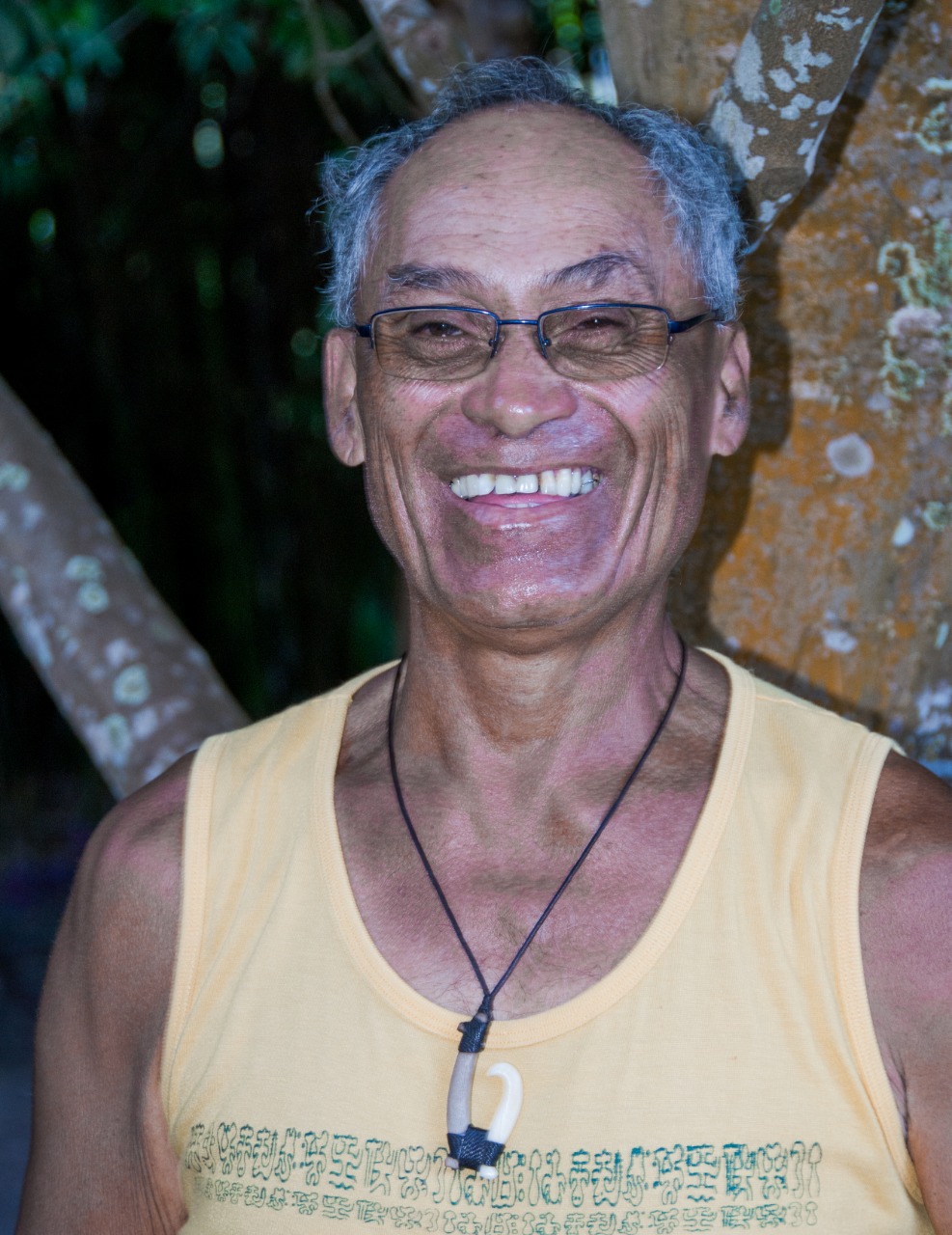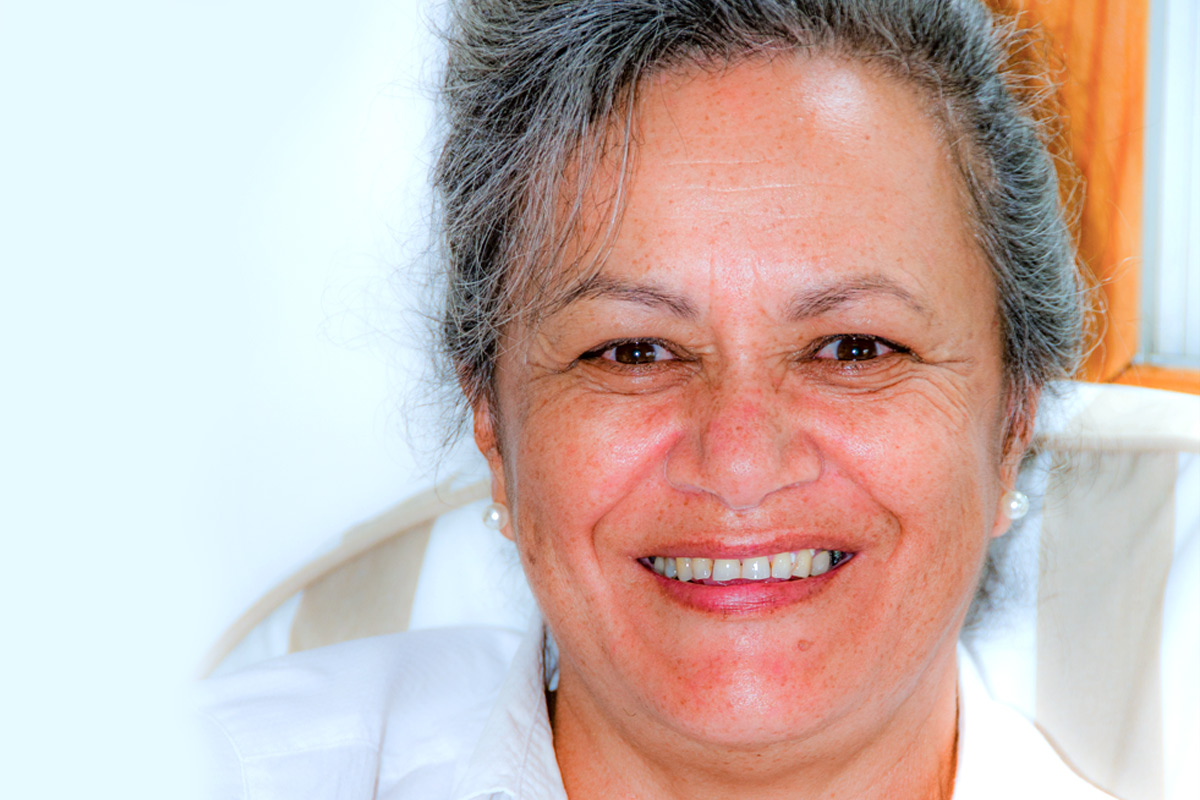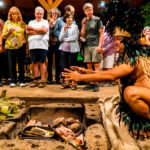
Esperanza Pakarati Tepano
“We had barely arrived on the Island with my wife when we received a visit from Victoria Atan, who was also called Ruau Tekarera, coming on horseback with a white chicken, to invite us to the La Perousse Bay. Since at that time the Islanders weren’t allowed to roam freely over the Island, she had gotten a special permission from the Navy. When we arrived at the little port, Esperanza stayed on the beach while Victoria took me to Ahu Hekii where she started a very strange ceremony which lasted almost an hour. She spoke, she argued, she whispered and she sang in her language, placing her hands over my head. When she was finally done, she said to me, “Poki Hiva, son of the continent, the Varua (spirits) have accepted you. Within a week you will speak our language.” Don’t ask me how, but it happened.

As it happened, once she felt that one of her sisters, who had spent a long time living in France, was disrespectful toward her. Esperanza, the Atariki (the oldest of the children in the family) had ceded a property to her sister, who then took more than the amount agreed upon and built a house on it. Esperanza responded in accordance to the old ways. Without saying anything to anybody, she went over and burnt down the problem.

Clothes were washed by boiling them with ashes. They came out impeccable. When we were thirsty and didn’t have water, she used a plant that resembles a clover called Poporo. It can be chewed and its acidity takes away thirst. Her father had a property on Maunga O Pipi where he was authorized by the Company to plant taro, uhi, manioc and other vegetables. He also raised pigs and chickens. We never lacked for food.
In those days it was difficult to get fishing hooks. It was much easier to catch lobster which were found in the shallow waters. It was enough to bend down and pull out what you needed, ten or twelve at a time. To catch eels, Esperanza taught me to use my index finger wrapped in a rag. First you had to beat a bloodied fish around in the water and call “Hui-Hu-Hui…” like a dying sound. The eels would come in great quantities, probably thinking that there was a dying animal. I had to put my finger in the water and let an eel bite it, pulling him in rapidly and giving him a blow on the head. It was the same with the squid. You would take them in your hand, remove their teeth with your own and then grab them by their tentacles and beat them against the rock before putting them in a canvas sack. Those were great lessons in survival.
Esperanza maintained contact with the Varua, the three spirits that were allied with her family, Hiva-Kara´A-Rere, Pae-Pae-Atari-Vera and Mata-Vara-Vara. She used to make a bonfire each week to invoke them and deliver food to them. “She had a very special voice which was notable for its resonant quality. I can still hear her.“

Featured Reports:
Manuel Tuki
Manuel TukiAt almost one hundred years of age, the sculptor Manuel A. Tuki is a shining example for the young people of today. He lives on his farm and, since he retired, he hasn’t stopped carving in stone and wood. Major works with his signature are to be found in...
María Angata
María Angata......... y la Rebelión de & the Rebellion of 1914Maria Angata Veri Tahi, daughter of Hare Kohou (of the Miru tribe) and Veri Tahi a Kau (of the Haumoana tribe) was born in 1854. During her childhood, when she was barely 8 years old, she witnessed the...
Niso Tuki Tepano
Niso Tuki TepanoIn the past, it was a custom to raise children from another family, for various reasons: not being able to have one's own children, not being able to raise one's own child or simply because a family wanted to have more children, as was the case for...













